Google has been majorly focusing on its consumers in the Indian market for a couple of years now and is trying to capture a user base across all price segments. For that reason, it has its foldable device to compete with the likes of Samsung’s foldable and the iPhone Pro models. This year, with a price tag of Rs 1,72,999, the Pixel 10 Pro Fold aims to go head on with the Z Fold 7 and Apple’s iPhone 17 Pro Max but is it worthy of a price tag that steep? Let me help you with an answer to that question in our review of the Pixel 10 Pro Fold.
Design & Display
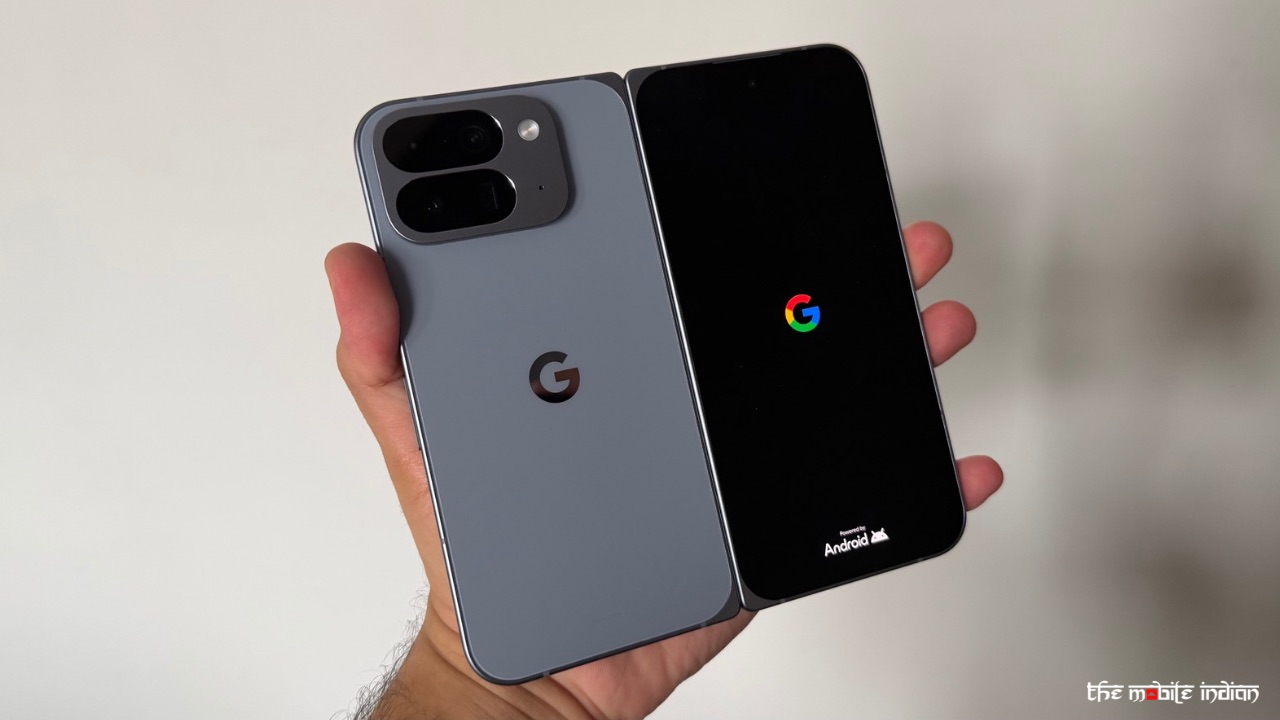
The design is what Google has figured out for the most part. Its Pixel 10 Pro XL is one of the most gorgeous smartphones in the industry right now and while the fold may not be matching the design wizardry Samsung has achieved with the thinness and lightness of the Z Fold 7, the Pixel 10 Pro Fold is still a good-looking phone your eyes can’t miss in the public.
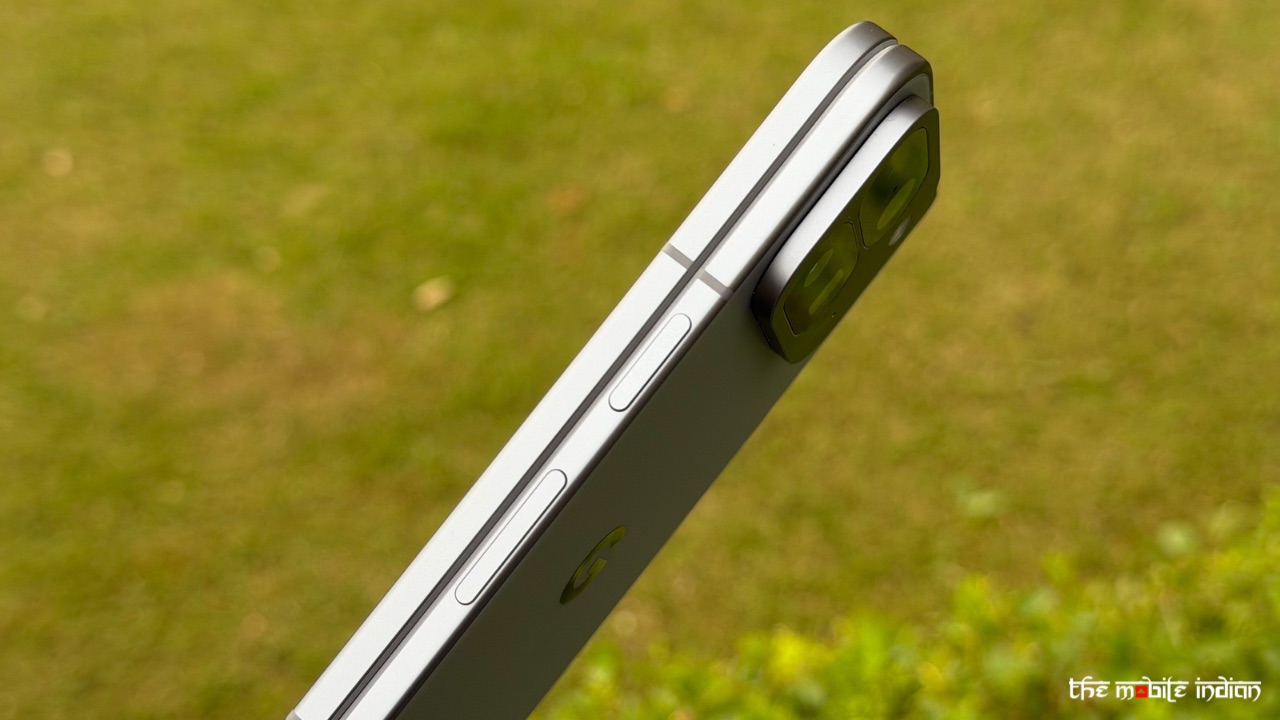
It has its own unique and distinct camera module on the back, which instantly helps you recognise it’s the fold from Google. Yes, it is thicker and heavier than the competitors but that doesn’t mean it’s uncomfortable to hold. The outer display aspect ratio is perfect for daily use as a regular smartphone and I prefer this aspect ratio over the Fold 7 which has improved from the Fold 6 but is still narrower than normal phones.
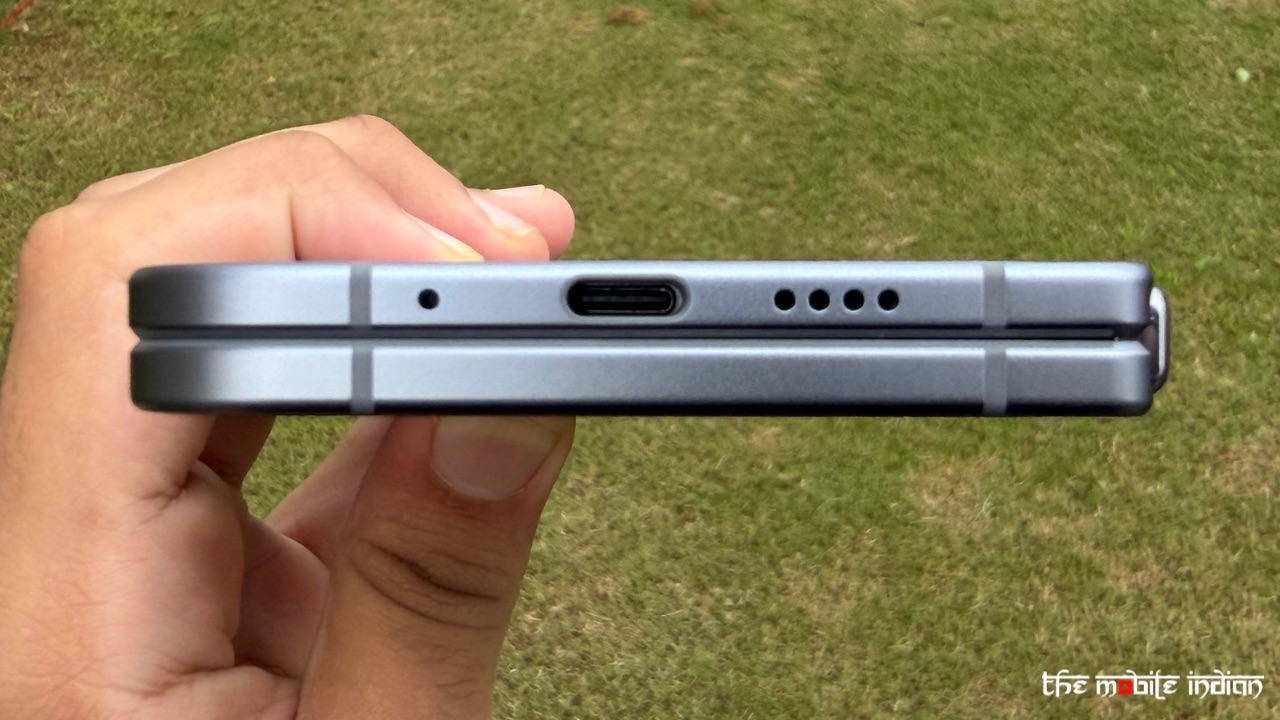
Being heavy could be a disadvantage for some but personally, the heft adds to the premium feeling of the Pixel 10 Pro Fold. Being thick means I can also easily (and quickly) unfold the Pixel 10 Pro Fold which is actually a pain with the Fold 7 as it is too thin to unfold quickly.

The buttons on the right have a good tactile feel but the positioning of the volume rocker is too low for my liking. The fingerprint sensor-embedded power key works like a charm, without any hiccups.
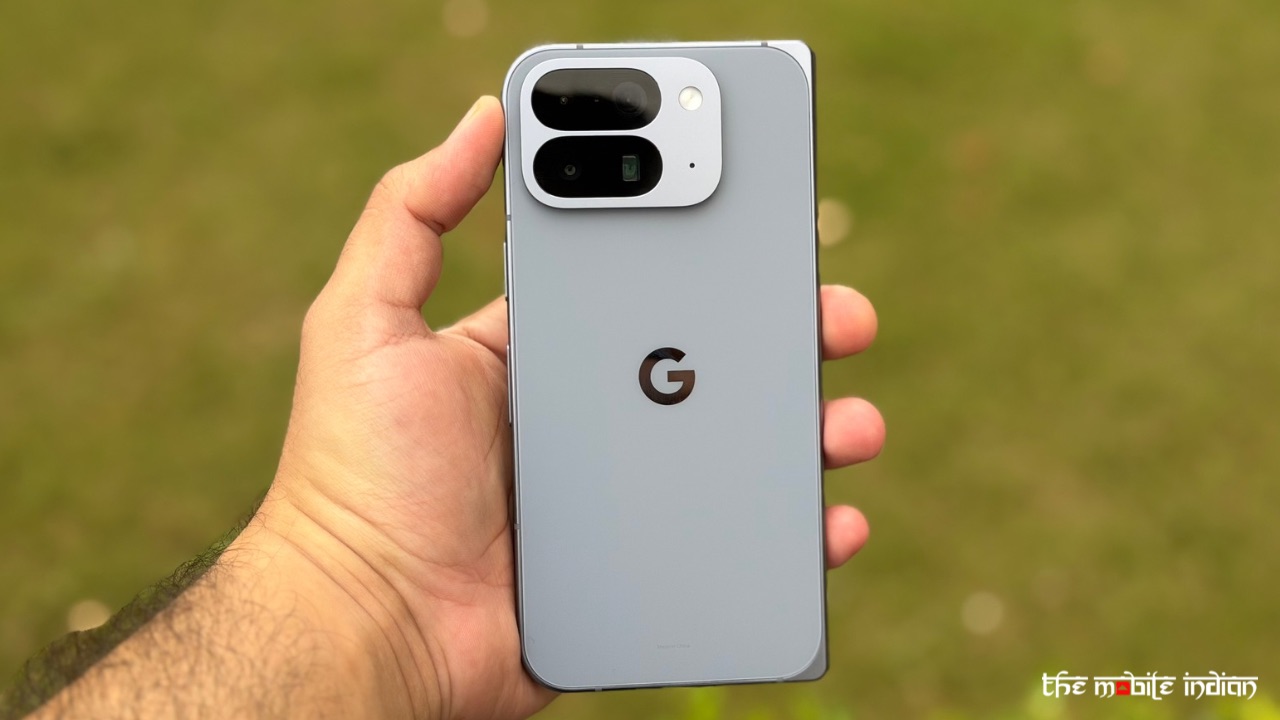
The Haptics are top notch and some of the best in the Android world. The stereo speaker setup is loud and has some bass to it so the sound is fuller compared to some other Android flagship. However, I still feel it doesn’t match the quality of iPhone’s speakers. Moreover, the location of the bottom speaker isn’t ideal as it can easily be blocked when holding the device in landscape.

The gearless hinge is smooth to use while unfolding and folding. It can also easily handle one half of the device at any angle. The IP68 rating is a cherry on top as it’s the first foldable in the world that can handle dust without any issues.

Overall, the Pixel 10 Pro Fold is built like a tank. It’s premium, durable, beautiful, identifiable, and comfortable to use which is everything a smartphone should be in terms of design.
Coming to the display, the front cover panel is a 6.4-inch OLED display with 1080 x 2364 pixels resolution, 60Hz to 120Hz variable refresh rate, 408 ppi, and up to 2000 nits peak HDR brightness and up to 3000 nits peak brightness. It is protected with Gorilla Glass Victus 2 and so is the back panel.
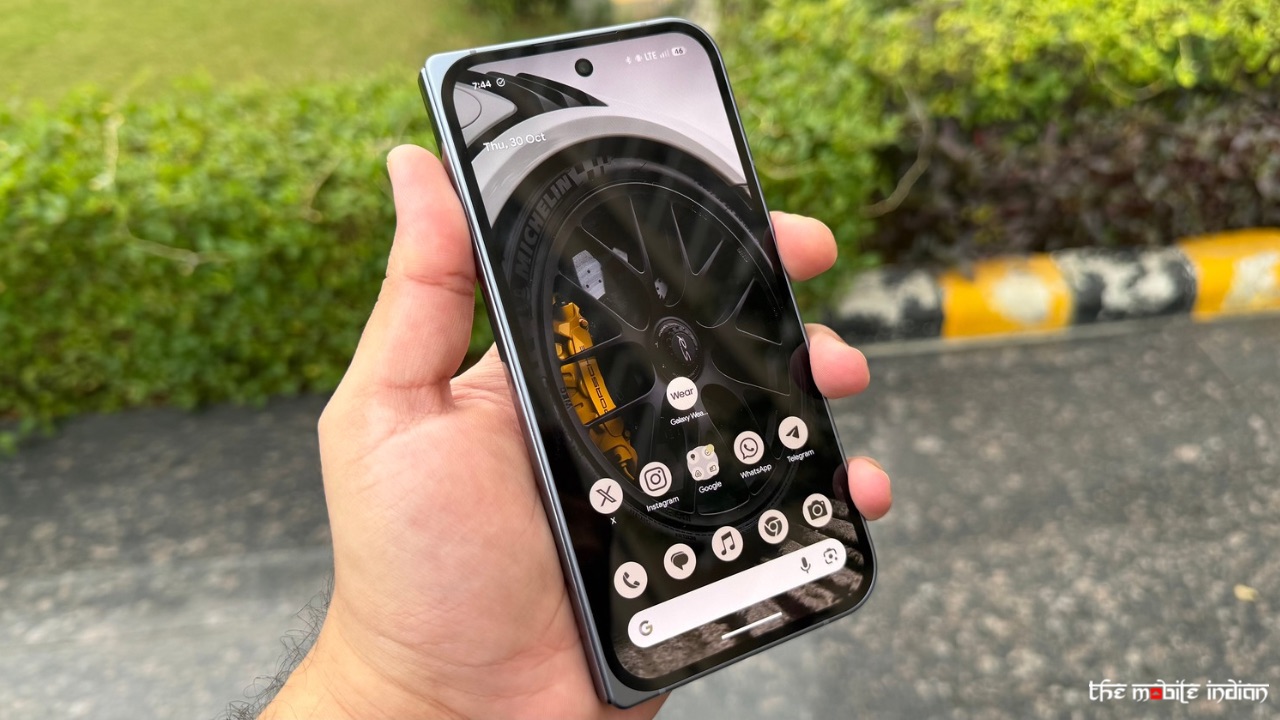
The bezels around the display are thicker than the Pixel 10 Pro XL’s but surely not as obnoxious as the Pixel 9a and are still decent to look at. The design on the front, with one side having sharp corners and the other rounded, could look a little odd at first but you get used to it quickly.
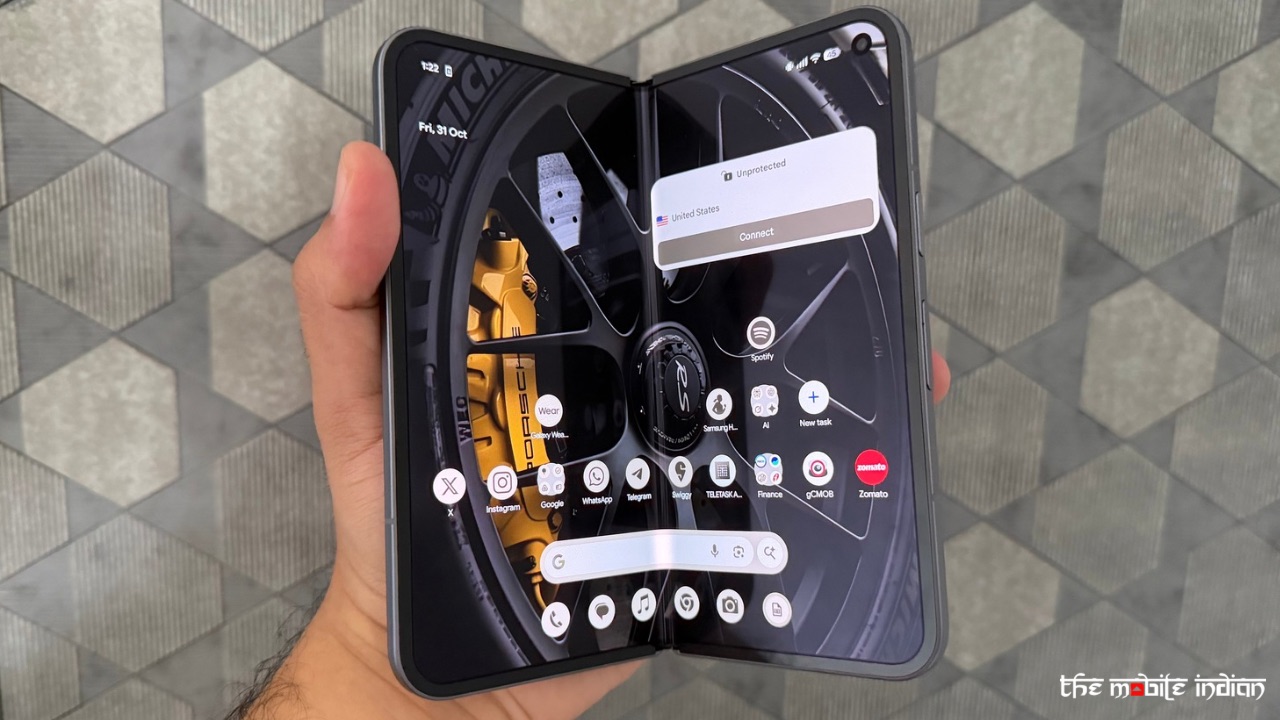
The panel’s performance is also enjoyable. It gets super bright outdoors, is sharp and shows vibrant colours. Further, it is also quite responsive and has great viewing angles, too. This panel, however, is inferior to the one used in the Pixel 10 Pro phones so it also doesn’t support the new wallpaper on AOD feature those phones have which is disappointing. Aside from that, I don’t have any major issues with the panel.
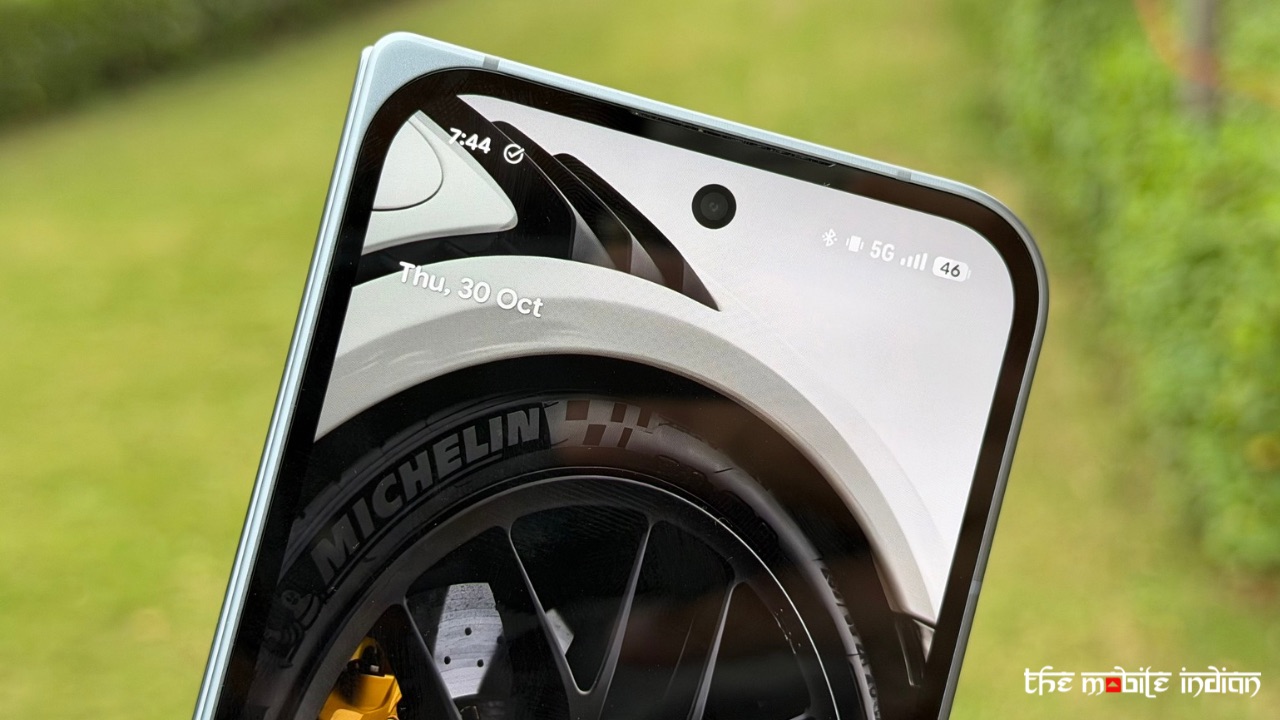
The inner foldable panel is an 8-inch LTPO OLED display which supports up to 1800 nits peak HDR brightness, 3000 nits peak brightness, 373 ppi, 1Hz to 120Hz refresh rate, and a Resolution of 2152 x 2076 pixels.
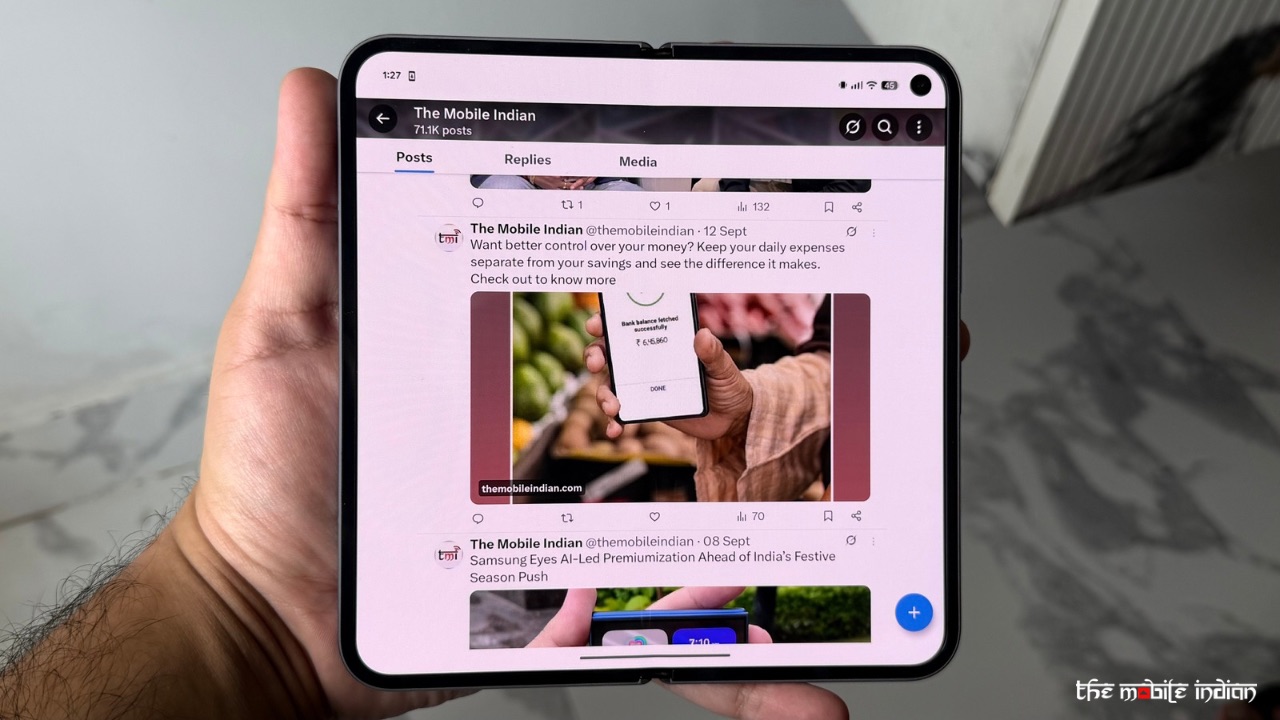
It possesses the same characteristics I described above for the main display and is one of the best displays I have seen on a foldable in terms of colours, sharpness, and brightness. The aspect ratio could slightly hamper viewing experience in some cases due to the huge black bars but that’s an issue most foldable screens have.
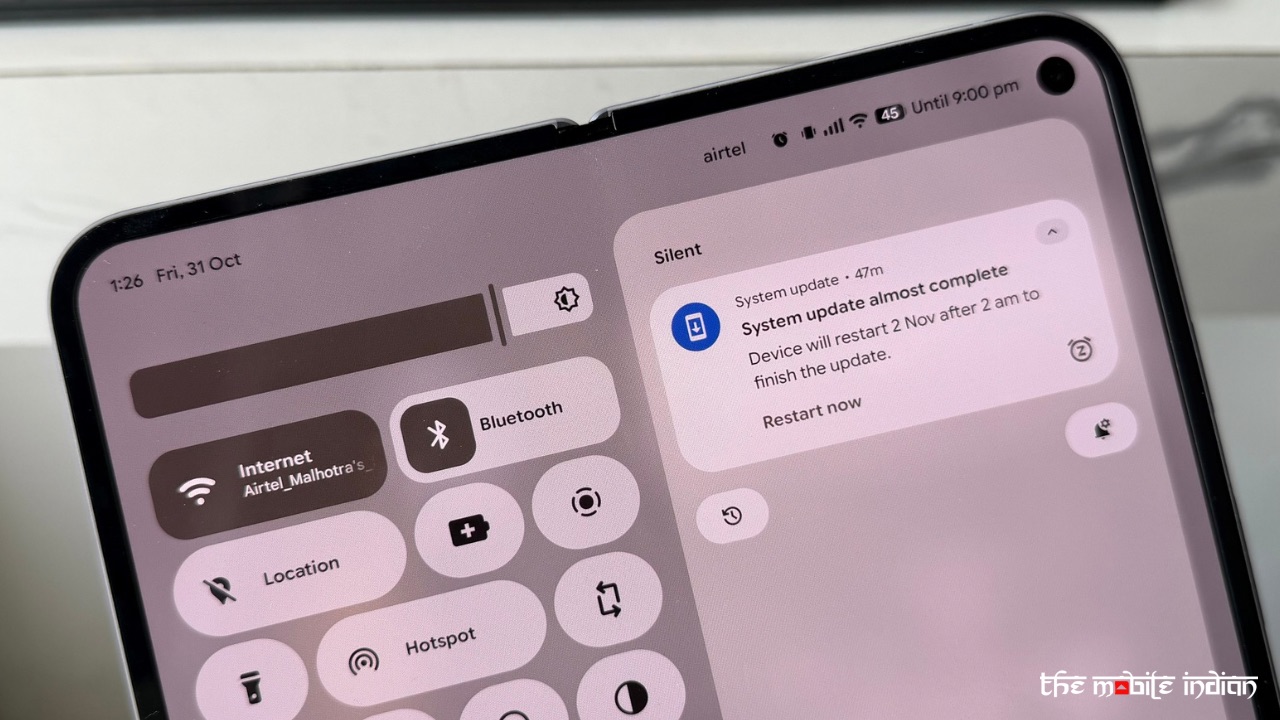
The only main issue I had with this panel is the crease. While most latest foldables have minimal crease, Google seems to have ignored working on it as it is quite visible and can be felt easily. Even a slight tilt while watching content will make it visible on lighter backgrounds.

Despite that, working on it, watching movies and videos, and going through Reels on a display this big which fits right in your pocket is still something you’ll enjoy on a daily basis.
Performance & Software
The device draws power from the Tensor G5 Chipset paired with 16GB RAM and 256GB of storage. It runs on Android 16 out of the box and will receive 7 years of regular feature drops and security patches.
With the Pixel 10 Pro XL review, we made it clear that it’s not meant for gamers and because we are dealing with the same chip and software on the fold, the situation applies here, too.
While it can handle even demanding titles, the lack of gaming features and proper optimisation is a letdown. At this price point, a foldable should be able to handle everything you throw at it and while technically the Pixel 10 Pro Fold can, to some extent, the sheer experience of playing games on this phone isn’t the best.
Gaming could have been a major plus point for this phone as anyone would want to play titles on that 8-inch foldable screen but unfortunately, you won’t get the same experience here as you’d get on a Galaxy Z Fold 7.
Performance wise, for daily use, the Pixel 10 Pro Fold is nothing short of phenomenal. There’s super smooth animations all around, the aesthetics of the software are top notch, and RAM management has been impressive which is very important for a foldable device considering you’ll be multitasking a lot on that inner display.

Opening even demanding apps side-by-side, including apps like Google Chrome with multiple tabs open in the background, wasn’t an issue for the Pixel 10 Pro Fold. It could keep them all in memory without breaking a sweat.
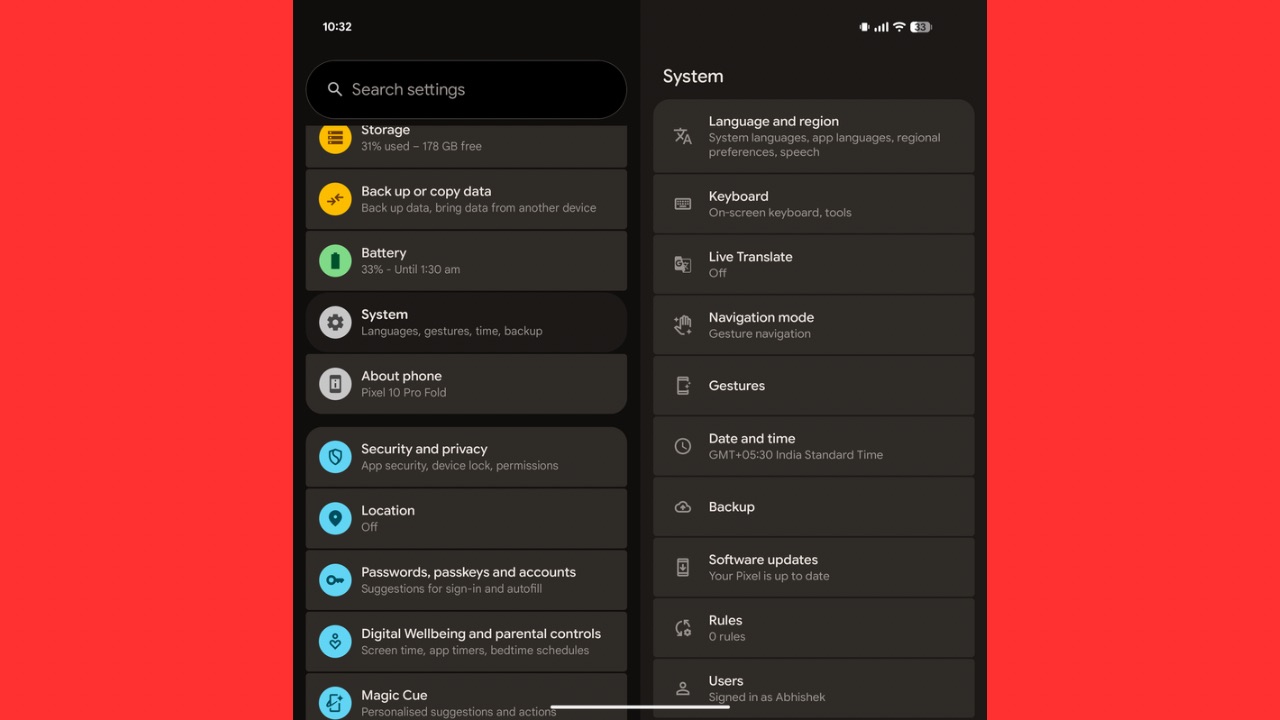
This is the most feature-rich Pixel you can get as it has the hardware advantage which also gives it the software advantage that makes the most out of the hardware. For instance, you get the Taskbar here (which other Pixel 10 devices lack) when you use the foldable display.

With that, you can drag and drop icons to open an App next to another app that’s already open. Switching apps with the taskbar is also quick. You can also PIN the taskbar to always have it there when you are using the inner screen instead of having to bring it up by swiping from the bottom.
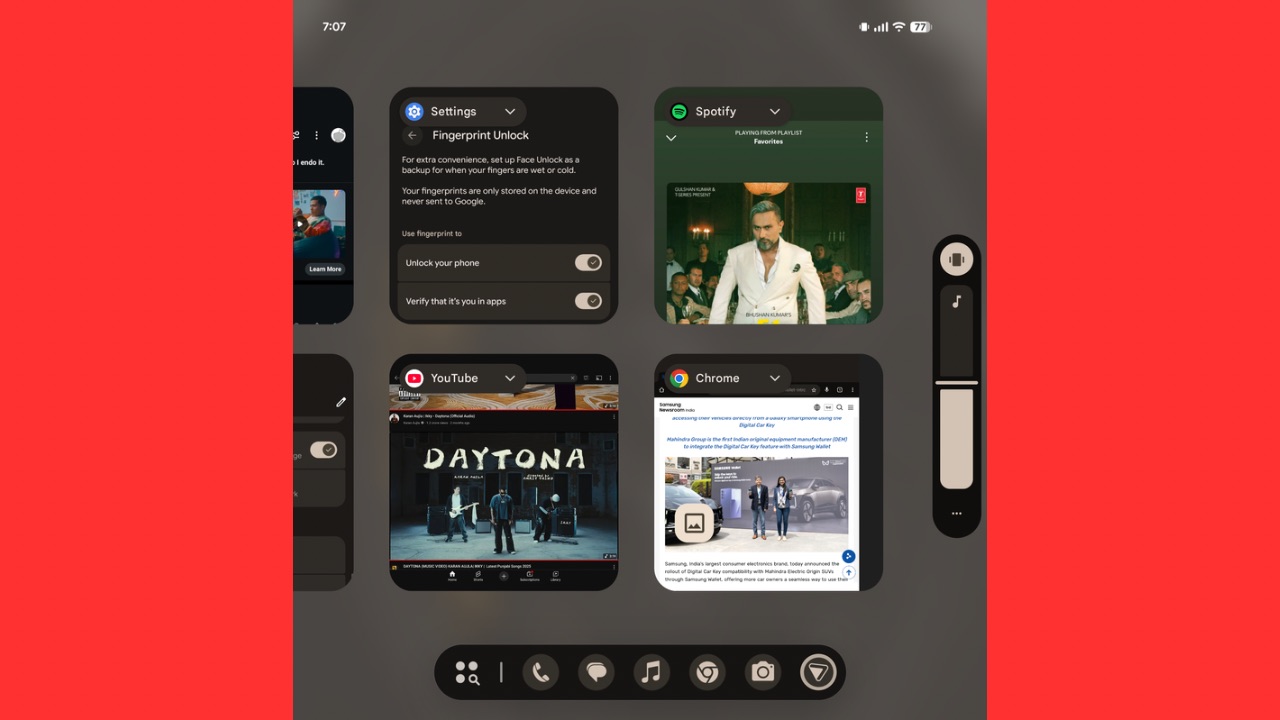
The multitasking system on the Pixel 10 Pro Fold is restricted to split screen, so it’s not as intense as Oppo’s, Oneplus’, and Samsung’s foldable phones where you can even have apps open in pop-up windows. Aside from this, you can save your preferred split screen app pairs so they always open side-by-side with a single tap.

If you fold or unfold the device while using an app, it can continue to stay open on either screen if you choose to do so in settings, otherwise you can turn this off, or choose a setting where you have to swipe up after folding or unfolding to continue using the device (without entering your password).
There are a few bugs present with the software, though. Sometimes upon folding the device, the screen goes blank and the device has to be locked and unlocked to make it work.
Speaking of AI, the experience remains identical to the Pixel 10 Pro XL, with features like Magic Cues (which still doesn’t work for me), Pixel studio, Pixel Screenshots, NotebookLM, ability to add background music with AI for your recordings, create AI wallpapers, and of course, Gemini, which remains the most useful AI feature on Pixel phones for me personally.
There’s plenty of personalization available such as effects on wallpaper, coloured icons, number of clock styles for lock screen, gestures such as tap to wake, double press power button to open camera, and more. Features like Now Playing and Private Space remain my personal favourites. The live activities on lock screen work well and are quite useful, especially for Google Maps. However, the apps that can use this feature remain limited for now, compared to OnePlus’ and Apple’s implementations where the feature works with a decent amount of third party apps as well.
Overall, while the Pixel’s software experience is clean and polished and it’s a huge advantage for Google’s slab phones, such as the Pixel 10 Pro XL, it can be a disadvantage for the foldable form factor at the same time because it limits the true potential of what that huge foldable screen can do. The Pixel 10 Pro Fold has the power to handle those workflows but simply lacks the software implementations compared to the extensive feature set of a Z Fold 7 or a foldable from Vivo, Oppo, or OnePlus.
It’s a Pixel, so timely updates from Google are expected. The device has received a couple of updates since we started reviewing and should soon receive the November 2025 security patch.
Connectivity performance of the handset remains decent. 5G works as it should, while Wi-Fi and Bluetooth performance is optimal.
Battery
The smartphone is backed by a 5015mAh battery with 30W Fast wired charging and support for Qi2 15W wireless charging also.
It’s a decently big battery for a foldable phone and is definitely bigger than what we see on the Galaxy Z Fold 7. It’s slightly smaller than the 10 Pro XL’s 5200mAh cell but the results still look promising. With moderate use, I could easily get 2 days of usage and with heavier use it was lesser.

Usage including chatting on WhatsApp and Telegram, scrolling through Instagram Reels, browsing Chrome, some calling, and listening to music, etc., resulted in about 7.5 to 8 hours of screen-on time and this is with AOD enabled.

However, this can drop slightly if you use the inner display more than the cover display as the battery has to power more pixels then. It can drop to 7 hours or slightly below if your usage remains on the demanding side.
Charging time was around 1 hour 40 minutes when charging with a CMF 65W GaN Charger which could have definitely been faster when compared to competition.
Cameras
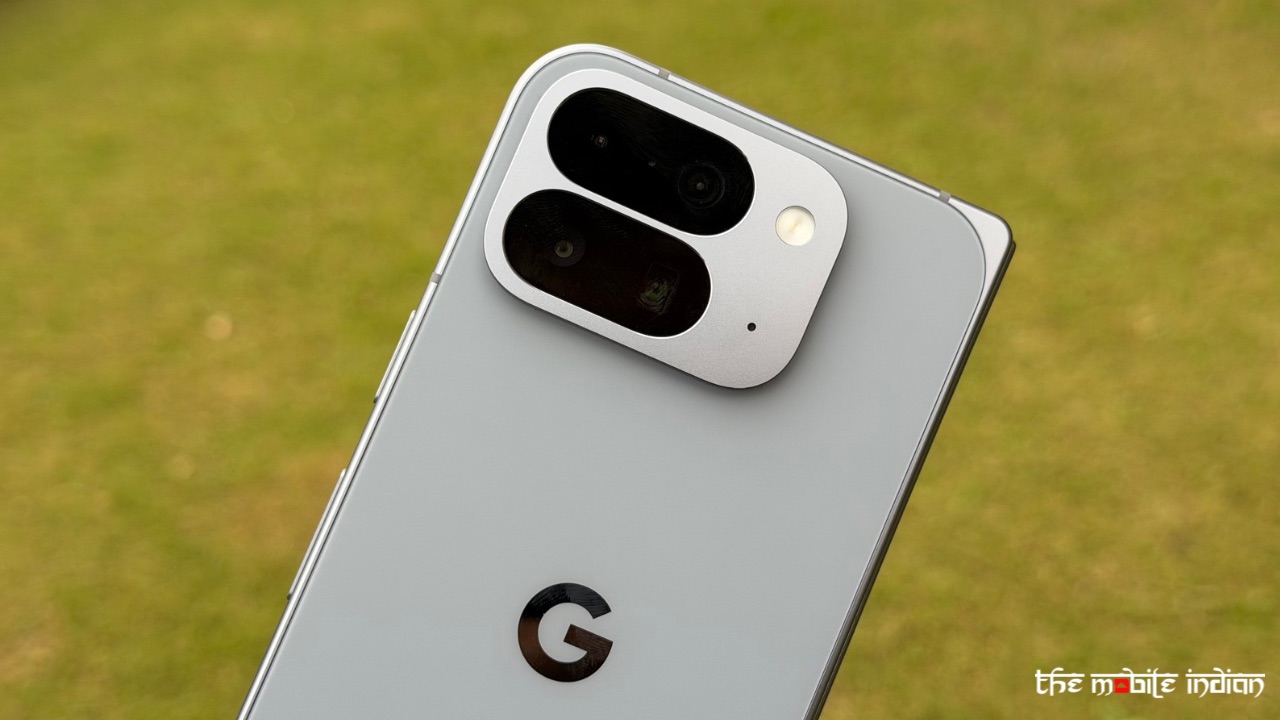
The Pixel 10 Pro Fold gets a triple camera setup at the back including a 48MP f/1.7 primary sensor with OIS, a 10.5MP f/2.2 ultra-wide angle lens and a 10.8MP f/3.1 telephoto sensor with 5x optical zoom, PDAF and OIS support. There are two front-facing cameras, inclusive of a 10MP f/2.2 outer front camera and the same sensor on the inside as well.

Photos shot outdoors with this camera look quite similar to the 10 Pro XL’s. They are sharp, show a natural colour tone, and do not disappoint in terms of dynamic range, too. Even after zooming in you’d see the pixels won’t fall apart at all.
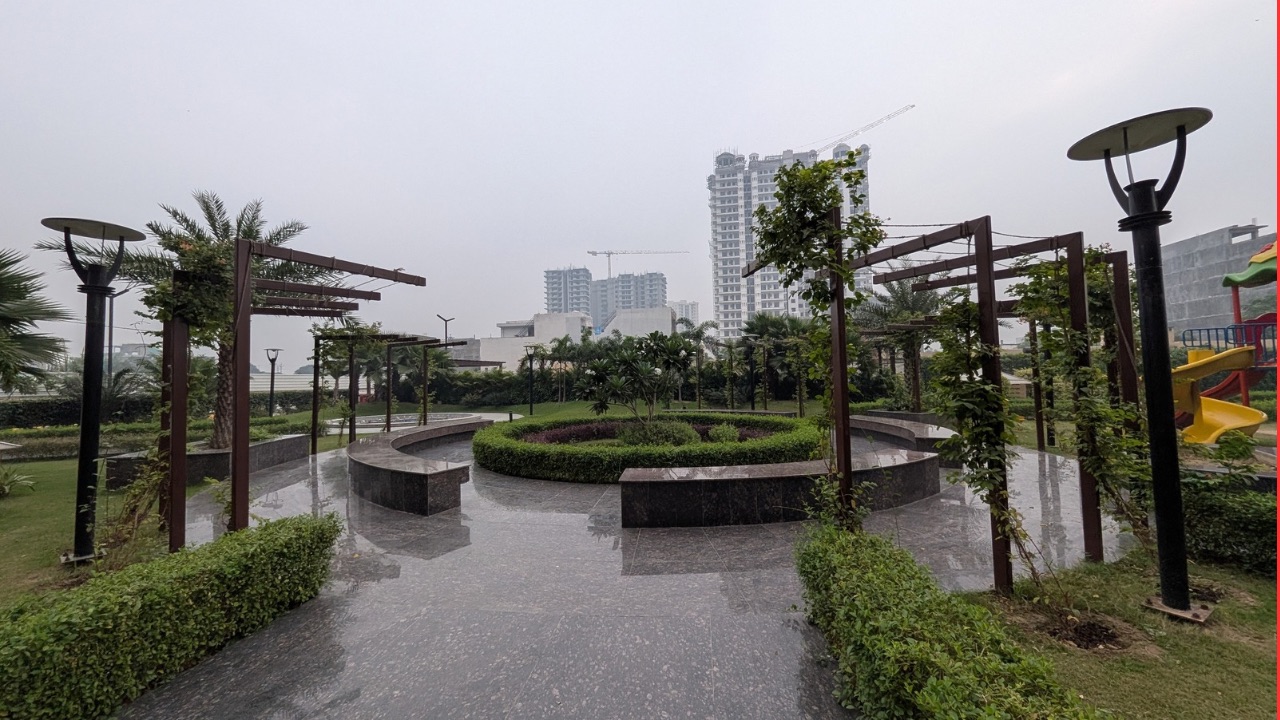
The ultra-wide angle shots retain the same colour tone as the primary sensor shots but they do have some amount of noise. The dynamic range and exposure control also get messy to some extent. EDGE distortion is handled decently.

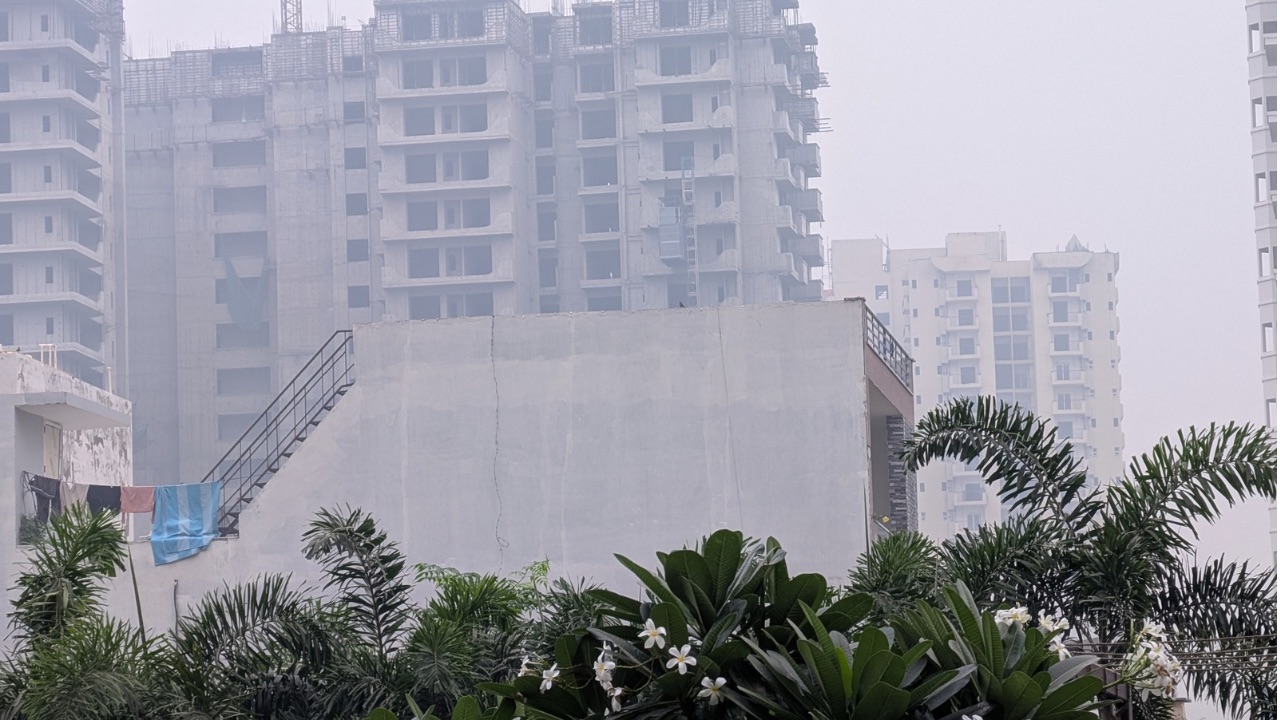

The third telephoto lens does a great job. The phone can zoom in up to 20x, and even at that level, the shots still look fairly clear. At 5x zoom, the photos retain good detail, and at 2x, the results are excellent.
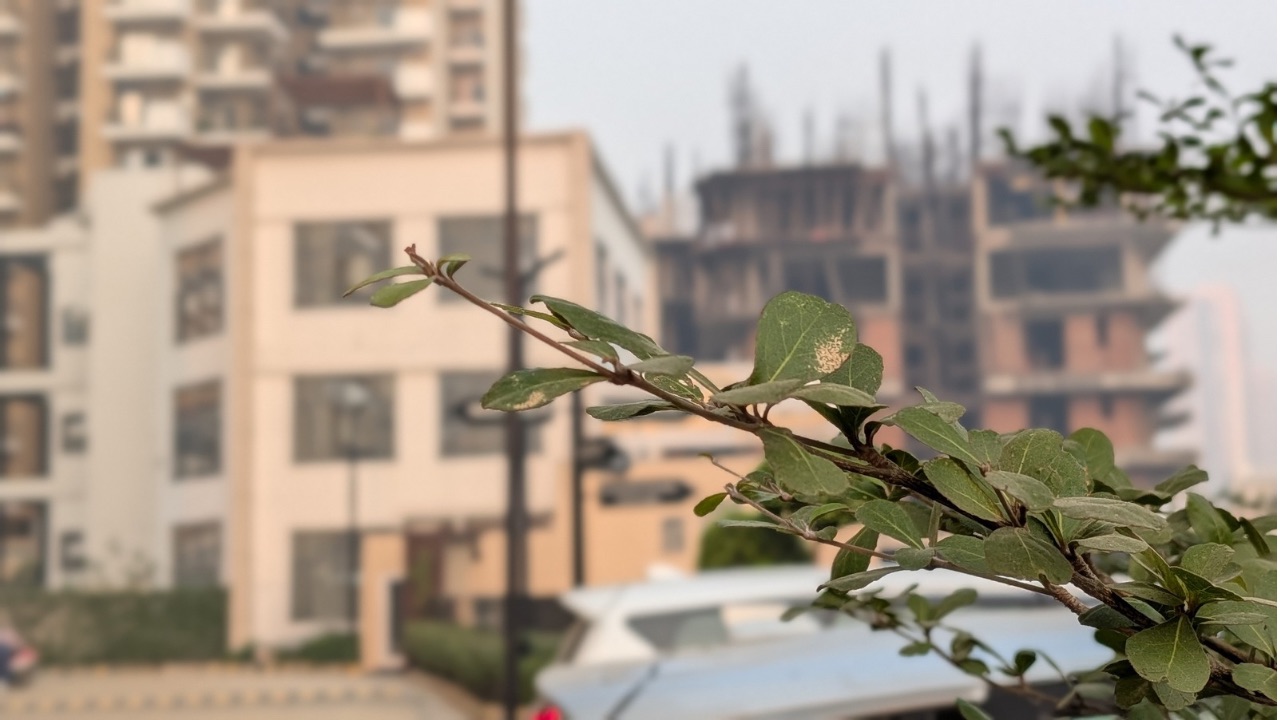

Portrait shots have exceptional detailing and super accurate edge detection. Similar to the XL, these are again some of the best portrait photos I have seen from a smartphone.
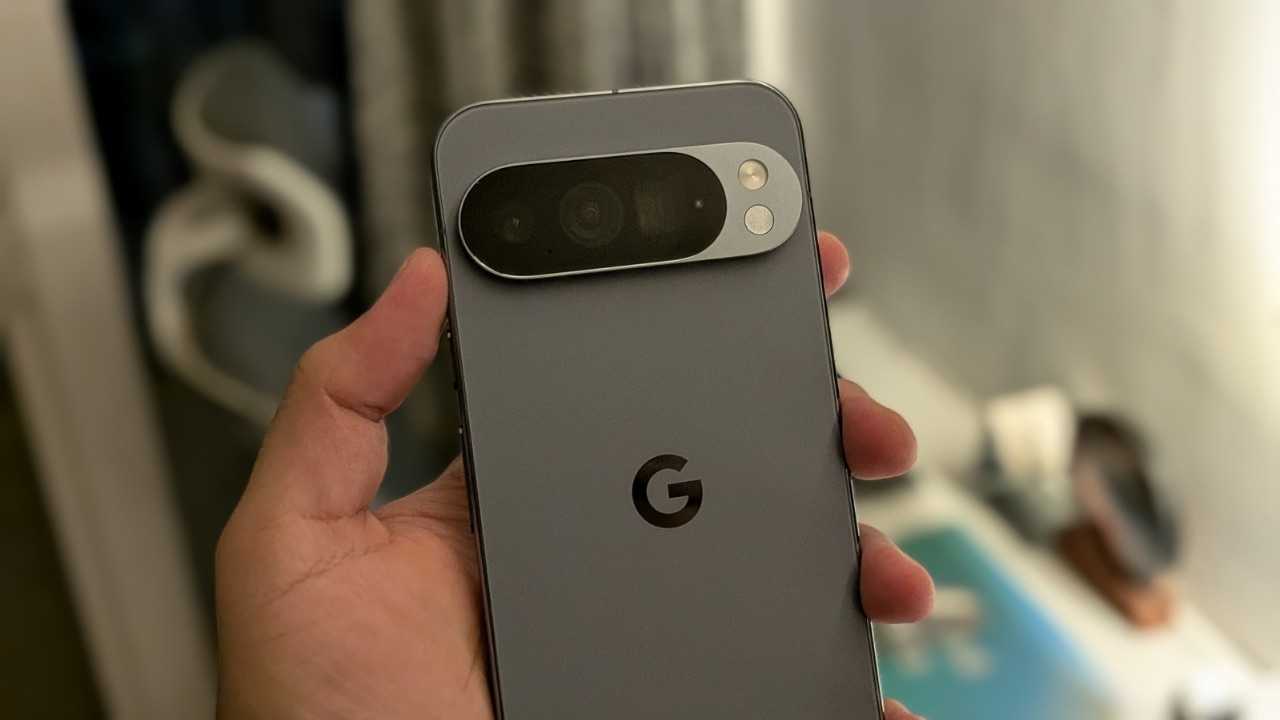
Under low lighting, the night sight mode shines where you can clearly see the exposure difference. The colours remain intact and there’s actually close to no noise in the photo.
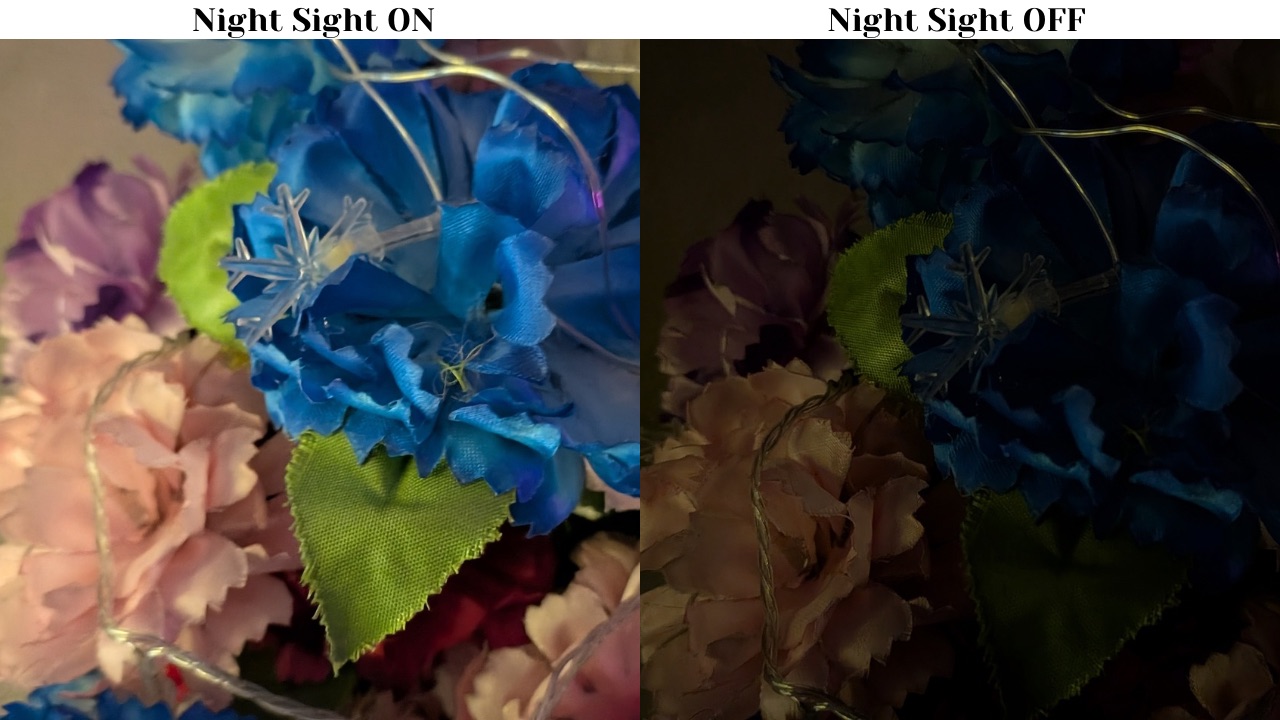
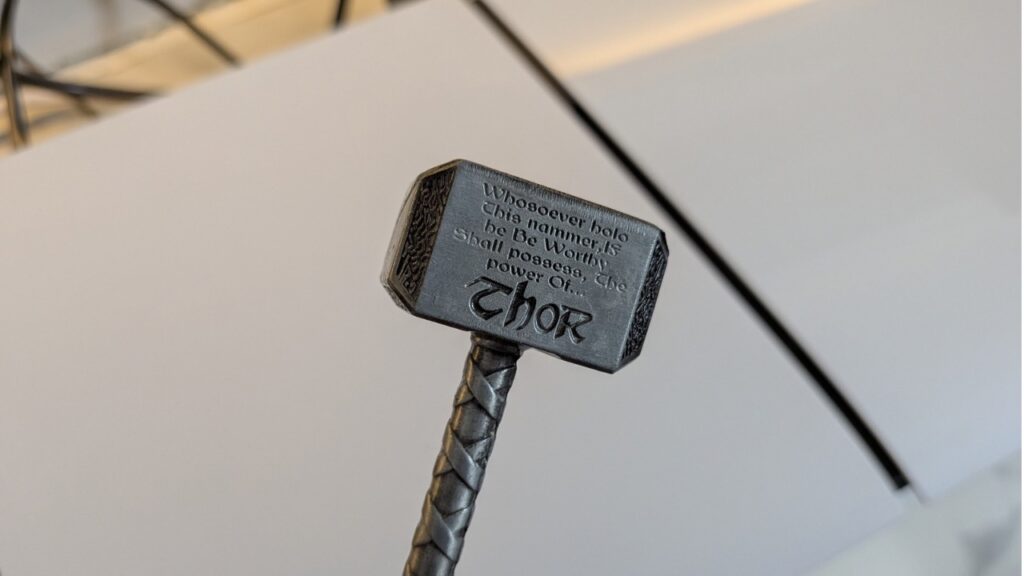
Shots under artificial lighting are again outstanding. You get to see high levels of detailing and the colours look very natural. Again, the device doesn’t compromise in any aspect when shooting under artificial lighting.

Selfies from both the 10MP Sensors are decent. Details and sharpness are on point and the skin tones are handled quite accurately. Even selfie portraits have a natural-looking bokeh effect and edge detection once again looks great.

Moreover, you can also use the cover screen as a viewfinder to take selfies from the back cameras. Due to superior hardware, of course, selfies from the back cameras are even better across the board, be it how the sensor handles skin tones and colours or the overall detailing in the shot.

